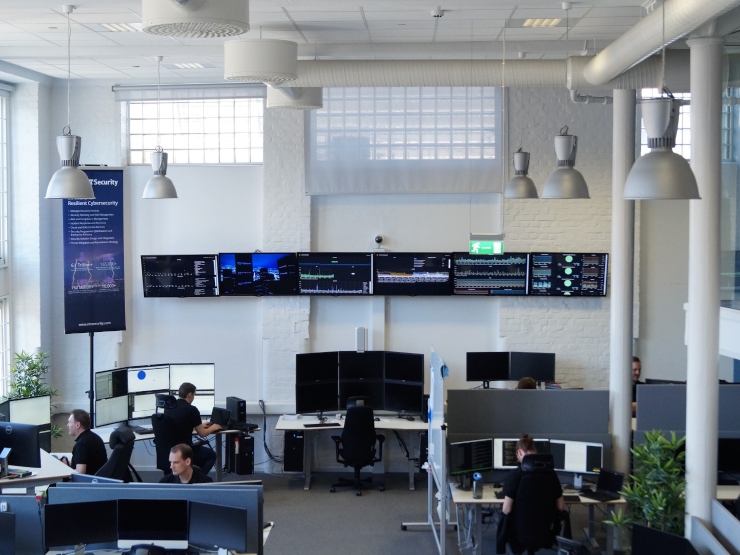-
Featured services
2026 Global AI Report: A Playbook for AI Leaders
Why AI strategy is your business strategy: The acceleration toward an AI-native state. Explore executive insights from AI leaders.
Access the playbook -
Services
View all services and productsLeverage our capabilities to accelerate your business transformation.
-
Services
Enterprise Networking
-
Services
Cloud
-
Services
Consulting
-
-
Services
Data and Analytics
- Intelligent Solutions
- Data Strategy and Program
- Data Engineering and Platforms
- Data Governance and Management
- Data Visualization and Business Decision
- GenAI Consulting
- GenAI Platforms
- GenAI Industry Services
- GenAI Infrastructure Services
- GenAI Value Transformation
- View Data and Artificial Intelligence
-
Services
Infrastructure Solutions
-
Services
Global Data Centers
-
Services
CX and Digital Products
-
Services
Application Services
-
Services
Sustainability Services
-
Services
Digital Workplace
-
Services
Business Process Services
-
Services
Generative AI
-
Services
Cybersecurity
-
Services
Enterprise Application Platforms
![]()
Accelerate outcomes with agentic AI
Optimize workflows and get results with NTT DATA's Smart AI AgentTM Ecosystem
Create your roadmap -
-
-
Insights
Recent Insights
-
The Future of Networking in 2025 and Beyond
-
Using the cloud to cut costs needs the right approach
When organizations focus on transformation, a move to the cloud can deliver cost savings – but they often need expert advice to help them along their journey
-
Make zero trust security work for your organization
Make zero trust security work for your organization across hybrid work environments.
-
-
![]()
2026 Global AI Report: A Playbook for AI Leaders
Why AI strategy is your business strategy: The acceleration toward an AI-native state. Explore executive insights from AI leaders.
Access the playbook -
-
2026 Global AI Report: A Playbook for AI Leaders
Why AI strategy is your business strategy: The acceleration toward an AI-native state. Explore executive insights from AI leaders.
Access the playbook -
Discover how we accelerate your business transformation
-
About us
CLIENT STORIES
-
Liantis
Over time, Liantis – an established HR company in Belgium – had built up data islands and isolated solutions as part of their legacy system.
-
Randstad
We ensured that Randstad’s migration to Genesys Cloud CX had no impact on availability, ensuring an exceptional user experience for clients and talent.
-
-
CLIENT STORIES
-
Liantis
Over time, Liantis – an established HR company in Belgium – had built up data islands and isolated solutions as part of their legacy system.
-
Randstad
We ensured that Randstad’s migration to Genesys Cloud CX had no impact on availability, ensuring an exceptional user experience for clients and talent.
-
![]()
2026 Global AI Report: A Playbook for AI Leaders
Why AI strategy is your business strategy: The acceleration toward an AI-native state. Explore executive insights from AI leaders.
Access the playbook -
- Careers
Topics in this article
With your workforce connecting from everywhere, is your security strategy equipped to manage the evolving risks?
As we continue to maneuver through what is hopefully the tail end of the pandemic, businesses are trying to find the right balance between safety and productivity for their employees – their own cocktail of working from home, remote, onsite and anywhere – that we call the hybrid workplace.As you plan, you’re likely wondering how to leverage cloud-based solutions to provide connectivity and access between users, applications, devices and data so your business can continue to function regardless of what hybrid ends up looking like. But no doubt you’re also making plans to manage your security and risk.
The number one question I hear from CISOs is: How can I assure the board that our business is secure and resilient to cyberattacks?
From a security operations perspective, you might be asking:
- What can I do myself versus outsource?
- Am I cost-effectively delivering network and cloud security?
- What network and cloud security technologies do I need to keep my hybrid workplace secure?
- What security capabilities and approaches (e.g., Zero Trust) should we consider?
Managing up and down requires situational awareness, data and insights. To know where you want to be, you will need to understand where you are now. Knowing your current and future desired state for security, visibility of your assets, as well as your organization's threat landscape and risk appetite provides the insights required to develop the strategy-aligned security roadmap.
The hybrid workplace is creating additional complexities for security teams
As you approach this there are four critical foundations you need in place:
Architect modern networks with secure access service edge (SASE) solutions
Many businesses are swapping out expensive MPLS in favor of more cost-effective, faster and easier to deploy SD-WAN solutions. SASE offers cloud-delivered security (as-a-Service) capabilities to rapidly provision security in tandem with the SD-WANs being deployed by IT teams. SASE helps to ensure outbound, inbound and internal communications as well as data transfer are secure and encrypted. It’s a fundamental hybrid workplace enabler because it connects users, devices, applications, and data using business policies across any network.
Move beyond the perimeter, to cloud-delivered zero trust access for applications
Your applications are moving to the cloud if they’re not there already. The traditional on-premises perimeter hasn’t disappeared, but the software-defined perimeter has grown exponentially. Managing networks and security at scale and effectively has become a significant operational overhead with cloud teams commonly administering their own network access. Zero-trust network access (ZTNA) is a great solution that allows employees to work from anywhere using the internet. It provides continuous verification and access is monitored for any unusual activity and changes. It provides a scalable, cheaper, faster to deploy and easier to operate solution than VPNs, and avoids appliance-based network bottlenecks.
Outsource threat detection and response to scale effectively
With hybrid working, you’re more exposed, and continuous monitoring to ensure the early detection of threats across your network is critical to reducing the impact of a breach. Services like Managed Detection and Response combine 24/7 monitoring, security expertise (hard to find in this market or cultivate yourself), threat hunting and detection, to discover hard-to-find threats, disrupt complex and sophisticated cyberattacks, and improve cyber-resilience. Outsourcing to the likes of an MSSP not only gives you this capability but helps you if you need to adapt to more remote, more onsite working, etc. They’ll have better intelligence capabilities and can scale in response to threats too.
Make sure security training is more than just a tick box exercise
According to our 2021 Global Threat Intelligence Report, cybercriminals recognize the opportunity in targeting remote employees. They know they’re more vulnerable while working from home and are a reasonable way to gain entry to your business. Enabling them to be a human firewall will help keep attackers out of your network.
Call to action:
For help with securing your hybrid networks, get in touch.





